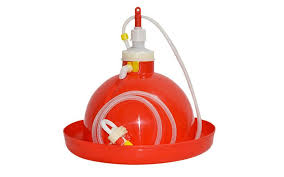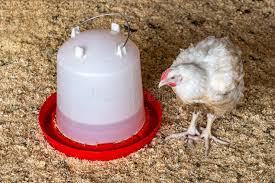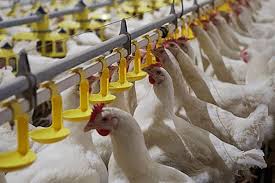To achieve optimum performance from birds, it is extremely important to provide fresh and clean drinking water.
For this, water must be available reliably, free from contamination, and within easy reach for the birds. This article discusses automatic drinkers used for poultry production.
Overview of Automatic Drinkers for Poultry
The Automatic Drinker is innovative equipment that provides a clean and continuous water supply for poultry with minimal use of manpower for constant refills.
It can provide a 24-hour supply of water once connected to a filled overhead tank. As a bird drinks, a reduction in water levels in the cup automatically triggers a mechanism to refill the cup.
Once the water reaches a particular level, a negative feedback mechanism adjusts the valve to stop the supply of water to the cup.
Some are designed in colors to attract chicks and birds in general, thus they are ideal for broilers, breeders, layers, pullets, ducks, and other similar birds.
Read Also: Methods of Castration in Sheep and Goat
Types of Automatic Drinkers in Poultry Production

1. Bell and Dome Drinkers: These feeders look similar, but they are designed for different types of use. Dome feeders sit on the floor; bell feeders need to be placed in the air to work correctly.
Bell water feeders need to be hung in the air and are better used indoors. If used outside, the wind can cause them to work improperly.
However, dome water feeders are more suitable for outdoors. The wind and rain won’t cause these types of water feeders to leak or stop them from working correctly.
Each bowl has a lip around the base that protrudes up approximately a half inch. This lip and base hold the water that birds will feed from. Both designs use similar methods to control their water flow.
The water holder with the protruding lip at the base is suspended slightly, and this suspended dome (or bell) is connected to a spring valve at the top of the feeder.
The valve opens when the water bowl is light, and this allows water to flow into the bowl at the base. As the water flows into the base, the weight increases, overcoming the spring’s tension and sealing shut stopping the flow of water.
Both of these water feeders do not have a reservoir or water store. They also won’t take mains/household water pressure; therefore, it’s best to feed them from a header tank.
2. Little Giant Drinkers: This design has been used for over 60 years in poultry watering, and it’s widely used by large-scale poultry farms.
They are inexpensive and can feed up to 200 chicks per feeder. These feeders use a similar system as bell waters to control their flow of water.
Read Also: Ruminant Animals: A Comprehensive Guide
An internal spring opens an internal valve when the drinking cup is empty, allowing water to flow in. Once the drinking cup is full, the weight of the water will overcome the spring tension, sealing it shut.

These types of waterers need to be suspended in the air to operate correctly. When set correctly, these water feeders show higher efficiency. Incorrect water pressure will make them more likely to fail and leak.
Dirt getting into the valve is one of the common causes of malfunction in this type of water feeder. The improved design of this feeder was the Little Giant pan, which consists of a large pan with a float valve in the middle that regulates the water level.
The water level is adjustable, and this can be set by altering the float valve. These units also come with a magnetic lid that’s designed to stop muck and debris from getting into the bowl.
The lid also helps prevent birds from roosting above the water and pooping into it.
3. Cup Waterers: These are very small water feeders. Their drinking bowl is usually 1-2″ wide, and they use a valve to regulate water flow. There are two different designs of cup water feeders, each using a different type of water valve.
One design uses a tiny float valve, while the other uses a trigger valve. Float valves allow the water to seep into the cup once it goes below a specific level. The trigger valve allows a little water into the cup after it is pecked by a bird.
Cup waterers are designed to be used with low-pressure water systems they cannot be connected directly to the mains. To get the best out of cup waterers, don’t place them low and against the floor; this will help keep them clean.
The main way these waterers fail is due to muck and litter getting into the valve and causing damage. Also, the bowl on these feeders is tiny compared with other types; it doesn’t take much muck to fill it, stopping them from working.
Cup waterers are only really suitable for use on a small number of chickens rule of thumb is one for every 10 chicks. To mount these water feeders, they need to be screwed in position using the inlet valve on their backs.
Special mounts can also be bought that fix on the back of the feeder, allowing it to be mounted onto a cage or a wall.
4. Nipple Drinkers: These drinkers can be used in both manual and automatic setups. These water feeders are used heavily in large-scale poultry production.
The reason is that they are inexpensive and easy to fit. They can be installed by screwing them into a water supply, pointing them downwards.
In commercial systems, they are screwed into large piping systems placed a few inches off the ground.
Do you have any questions, suggestions, or contributions? If so, please feel free to use the comment box below to share your thoughts. We also encourage you to kindly share this information with others who might benefit from it. Since we can’t reach everyone at once, we truly appreciate your help in spreading the word. Thank you so much for your support and for sharing!

